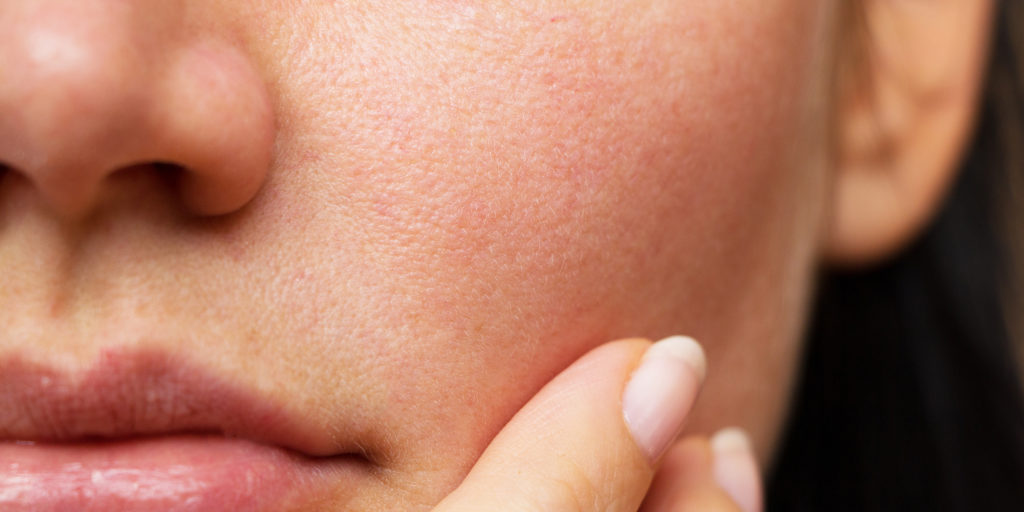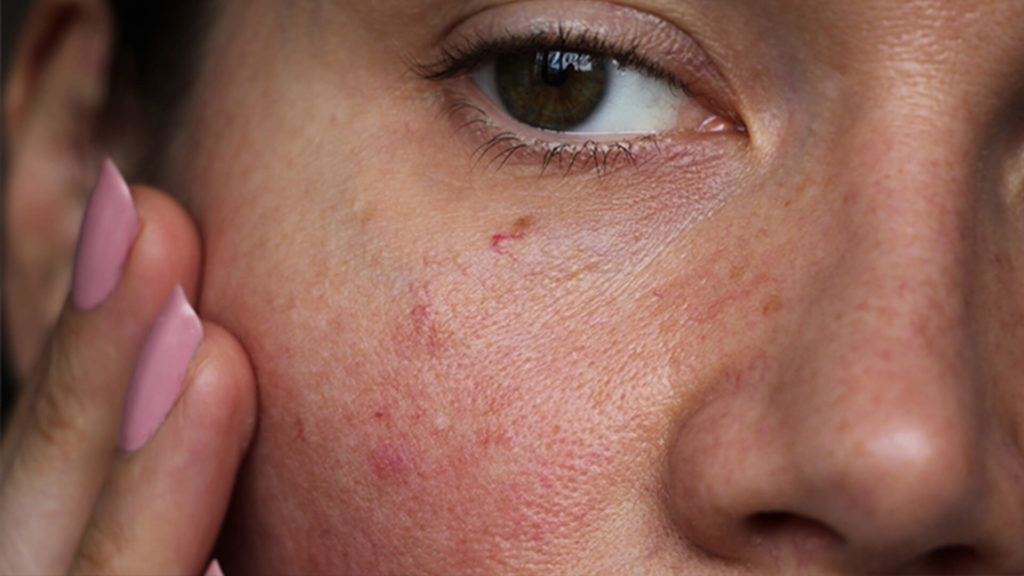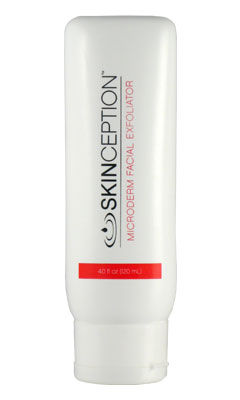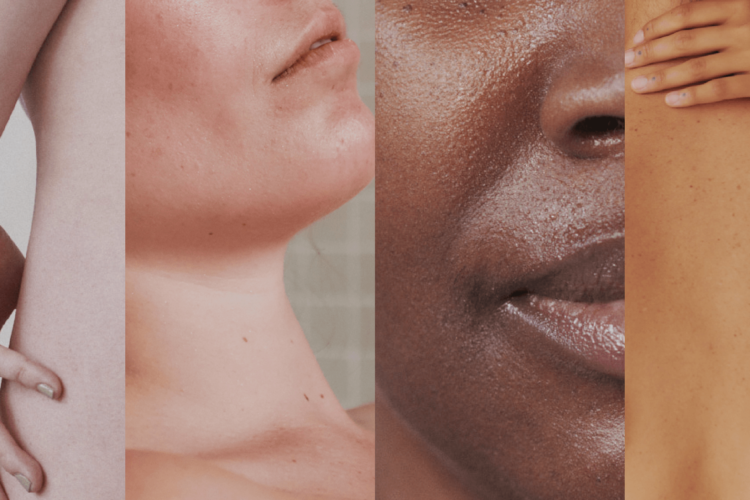If you’ve ever had any skin-related issue, from unwanted blemishes to ingrown hairs, you have probably either read or been told to exfoliate. Exfoliation works magic on the skin and is often the solution to many of life’s skincare problems.
Regular exfoliation is recommended for both men and women. However, women might be significantly more informed on the matter. It helps heal and rejuvenate the skin in preparation for other skincare maintenance and keeps it healthy, even with daily makeup appliance. While it may be less common for men to exfoliate, it is highly recommended for any man that wants healthy and young-looking skin.
We are going to talk about why exfoliation is so essential for the skin, how it keeps skin young and healthy, and some recommendations for a proper exfoliant.
If you’re struggling with Rosacea, don’t forget to check out our post on, “How To Combat Rosacea Without Going To The Doctor.”
What Is Exfoliation?
Exfoliation is the removal of dead cells on the skin’s surface. The most common type of exfoliation is the use of a textured scrub. But there are also creams with known exfoliating chemicals and/or natural ingredients that do get rid of dead skin without the need for abrasive scrubbing.
On average, the skin loses 30,000-40,000 skin cells every single minute. It is estimated that you lose 5-10 pounds of dead skin flakes a year.1 Fortunately, the body is constantly making new skin cells. New skin cells last for about a month before eventually flaking off and continuing the cycle. The new skin cells generally push their way to the top layer of skin.
Problems may arise, if for whatever reason, those dead skin cell flakes don’t naturally fall off. That’s where exfoliation comes in handy. With the proper method of exfoliation, you can assist in the removal of dead skin cells and give new cells space to flourish.

The Benefits of Exfoliation
Proper exfoliation helps keep skin healthy and young-looking by eliminating dead, or unwanted, skin cells on the surface of the skin. This process proves to be beneficial in many different areas of skin health. Let’s talk about some of the most common benefits of regular exfoliation.
1. Minimize Blemishes And Breakouts
When you exfoliate your skin you are removing all debris on the surface of the skin. You are not only wiping off dead skin cells, but also pore-clogging debris. Unclogging pores helps prevent bothwhiteheads and blackheads from forming in the pore – which are caused by blockage of the pore.
Dead skin on the surface can block a pore, causing the oil that is produced by the skin gland to get stuck in the skin, leading to a breakout. Regular exfoliating prevent this blockage from occurring too often.
2. Helps Even Skin Tone
Exfoliation breaks down dry and dead skin, smoothing the overall texture of the surface of the skin. Over time, and consistent exfoliation, this can even out the skin tone. Exfoliation proves beneficial for acne scars, dark spots, hyperpigmentation, and rough texture on the skin.
3. Keep Skin Looking Young
As previously mentioned, exfoliating can help even out the skin tone and eliminate dark spots (these dark spots are often a result of prolonged sun exposure or aging). Consistent exfoliation can break up pigmented cells and remove the build-up of dry skin. This battles the process of visible aging and leaves your skin smooth and flawless.
4. Boosts Circulation And Blood Flow
Exfoliation helps circulation and blood flow while stimulating lymphatic drainage for internal cleansing. More oxygen-rich blood flowing to the skin, allows the skin to feed on the essential nutrients that lead to healthy and glowing skin.
5. Helps Other Skincare Products Work Effectively
If you’re using other skincare products or makeup, exfoliation is practically essential to properly prepare the skin for this process. Exfoliation gets rid of any pore blockage, allowing the skincare products to act more effectively without the worry of any oil build-up. Exfoliation also cleans and hydrates the skin, better preparing it for the application of make-up or other leave-in health products.
6. Helps Prevent Ingrown Hairs
While not everyone suffers from the inconvenience and discomfort of ingrown hairs, if you do, then proper exfoliation is something to look into it. Ingrown hairs can become trapped under a pore blocked by dead skin or debris. Keeping the airway open and clean prevents infection and the reoccurrence of pesky ingrown hairs.
These are just a handful of the benefits of regular exfoliation. Truthfully, exfoliation works magic on the skin. If there are any skin-related problems you consistently deal with, then there’s a good chance exfoliation can help you fight that battle. The next important thing is to understand the different types of exfoliants available and the proper ways to use them.

The Types of Exfoliation
There are three common ways to exfoliate – physical, mechanical, and chemical exfoliation. There are advantages and disadvantages to each method. The route you go will largely depend on your skin condition and preference.
Physical Exfoliator
A physical exfoliator is essentially a scrub that you rub on your skin that is comprised of healthy, safe ingredients to effectively massage away the dead skin. This is a grainy textured ointment you rub into the skin.
A physical exfoliator is excellent for the skin as the grainy texture promotes optimal blood flow to the skin. A physical exfoliator is generally more common, although it is most effective with minor skin-related issues.
A disadvantage to physical exfoliants is that the beads found in the natural ingredients may be too rough for sensitive skin types. In addition, some physical exfoliants have microbeads that contribute to pollution.
Mechanical Exfoliator
A mechanical exfoliate uses a machine or a device to exfoliate the skin. This is the least common type of exfoliating, as it is generally the more expensive option – often performed in Medspas. Common forms of mechanical exfoliation are Microdermabrasion and Laser treatments.
A Chemical Exfoliator
A chemical exfoliator uses various acids or enzymes to revitalize the skin, rather than rubbing and textured cream. The cream or solution works by dissolving the bonds between dead skin cells, allowing the dead skin cells to fall away. This method is generally more effective with severe or sensitive skin.
How To Find A Good Exfoliant For Your Skin Type
The method of exfoliation you choose should depend on your skin type. How sensitive is your skin? What reactions will you have to natural or chemical ingredients?
If you’re unsure about what kind of exfoliant to use for your specific skin type, you can always talk with your dermatologist about this. We are going to talk about different skin types, and certain ingredients to look for to better exfoliate each skin type.
Oily Skin
A giveaway for having oily skin is the shiny moisture that builds upon the skin. Oily skin is a result of an overproduction of sebum in the glands that may clog pores. Chemical exfoliants prove especially effective against oily skin types, as physical exfoliants may lead to more severe breakouts in the pores.
Chemical exfoliants include powerful ingredients, such as salicylic acid, that break down blockages in the pores. In addition, chemical exfoliants help regulate oil production in the skin.
Dry Skin
Dry skin tends to be more textured. It can also feel more flaky, itchy, or rough to touch. Both physical and chemical exfoliants are good options for dry skin types. It is important to note that you want to choose a softer method of exfoliant with dry skin. Try to avoid using an overly coarse brush or washcloth when using a physical exfoliant.
Combination Of Oily And Dry Skin
Having a combination of oily and dry skin can be frustrating. You may have mostly oily skin with patches of dry skin on the nose and cheekbones, or you may have largely dry skin with patches of oily skin somewhere.
Fortunately, exfoliating oily and dry skin isn’t much more difficult. Chemical ingredients might be the most consistent for this type of skin, but you can also choose to use different exfoliants to target different areas.
Sensitive Skin
Telltale signs of having sensitive skin are frequent rashes, redness, or puffiness. The skin might also sting or burn after product use.
It can be more difficult to pick out the exfoliant that works best for your skin and causes minimal reactions. The key for sensitive skin is to look for an exfoliant that has soothing ingredients, such as lactic acid, to help nourish and calm the skin.
Another thing to be conscious of when exfoliating sensitive skin is over-exfoliation. While it is recommended to exfoliate two to three times a week for most people, those with sensitive skin may want to try exfoliating only once or twice a week.

Universal Exfoliant Products
As we discover more about how our skin and bodies work, more and more chemical products are coming out that can aid in all skin types, regardless of oil or dryness levels. One of these products that we would recommend is Microderm Facial Exfoliator from Leading Edge Health.
This specific exfoliator is an excellent choice for both dry and oily skin types. This is also a very mild and soothing exfoliant, so is a great option for sensitive skin types. While it is a chemical exfoliant, it is not chemically intrusive and makes use of natural ingredients to get your skin where you want it to be.
It includes high-quality ingredients, such as glycerine (excellent for dry skin types) and Sodium Lauroyl Sarcosinate (excellent for oily skin types) to bring you a very well-rounded option for skincare. In total, Microderm Facial Exfoliator makes use of 24 ingredients that are proven to effectively exfoliate, clean the facial skin, and result in glowing skin.
Trial And Error
Regardless of what kind of skin type you have, you might want to try out a few different types of exfoliants to see what works best for your skin. We don’t all have the same skin, with the same reactions, so it is recommended to test out different products to find your optimal results.
Keep in mind that your skin type can change. Some people get oily skin in the summer heat, while other people might get drier skin as they age. Be open-minded with your exfoliant and don’t be afraid to change it up as your skin transitions.
How To Properly Exfoliate
As mentioned earlier, the type and level of exfoliation will depend on your skin type. However, it is important to avoid over-exfoliation.
For most people, exfoliating two or three times a week is ideal. For those with sensitive skin, exfoliating once or twice a week is sufficient. You also want to avoid being too rough on the skin. While getting off the dead skin cells is important for healthy, nourishing skin, this can be achieved without rough bristles and high-pressure rubbing.
If you start exfoliating and notice some redness or a rash on the skin, try a different method. If it continues after a few weeks, talk with your dermatologist to find the root cause.

Do You Need To Exfoliate?
Exfoliation is beneficial for all genders and all ages. Unless otherwise stated by your dermatologist, proper exfoliation can only help the skin. Exfoliation leads to healthy, lively skin. It also better prepares the skin for other cleansers or makeup applied.
When done correctly, exfoliation leads to robust and rejuvenated-looking skin, giving you the glow you’ve always wanted. To get to this stage, it’s important to first acknowledge the type of skin you have and try to pick out the method of exfoliation that you feel most comfortable with.
Some exfoliants, like Microderm Facial Exfoliator, are designed to work with all skin types. This exfoliant is recommended for those looking for a product that is both consistent and effective. It’s now becoming common knowledge that exfoliation does, in fact, work miracles on the skin.
Whichever direction you decide to go in, we hope this article has enlightened you on the advantages of exfoliation. Now that you know the options available for you, and how different skin types may affect your decision there’s no reason to skip this important step in your skincare routine!
Boosting your collagen is important for all your skin types. Read all about the, “4 Secrets to Boost Collagen in Your Skin Naturally.”






